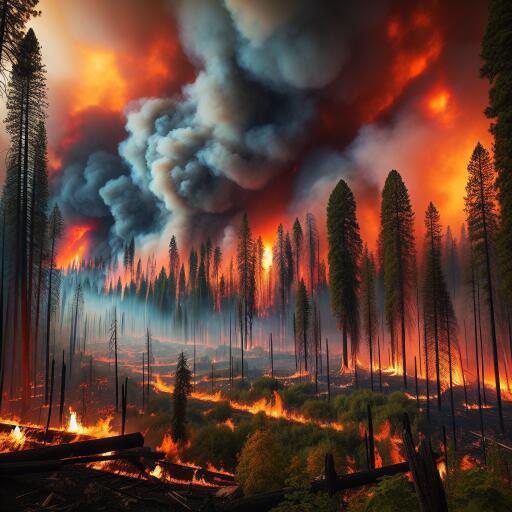
Wildfire Season has begun, but the worst is yet to come
Nepal’s lush and diverse forests are facing unprecedented threats as wildfire season begins, with dire consequences for global carbon emissions and biodiversity. Recent research emphasizes the urgency to address this climatically intensified danger, highlighting the potential release of nearly 500 million tonnes of carbon into the atmosphere. The combination of wood and soil carbon emissions from uncontrolled fires would not only exacerbate climate challenges but also undermine conservation efforts.
A detailed analysis of fire risks has been conducted through the innovative use of NASA Earth Observations combined with machine learning techniques, tracking data spanning the last two decades. This pivotal study is the first of its kind on a national scale in Nepal, intricately examining the interconnection of fire, carbon emissions, and biodiversity.
The timing of this wildfire season is particularly concerning as it is just commencing, with expectations to reach its peak in the coming months of April and May. The repercussions extend beyond ecological implications, presenting severe health risks due to exacerbated air pollution, which could inundate hospitals with respiratory cases. Economically, areas integral to tourism — accounting for a significant portion of the national GDP — are under significant threat, imperiling the future of vital habitats that support tourism.
The southern regions of Nepal, such as Lumbini, Madhes, and Sudurpaschim, are under extreme wildfire risk. Within these provinces lie six of Nepal’s twenty protected areas, including the renowned Chitwan and Bardia National Parks. These parks house rare species like the Bengal tiger, one-horned rhinoceros, and wild elephants, all at severe risk due to looming fires. Urban centers, including the capital city, Kathmandu, may experience deteriorating air quality as a result of these increased wildfire incidents.
The severity of the situation is underscored by data showing active fires blazing across 436 locations in 53 districts. As the risk escalates, the carbon-temperature feedback loop becomes more entrenched, threatening the unique biodiversity of Nepal’s forests like never before.
Urgent and concerted action is needed to avert a potential ecological catastrophe in Nepal. There is a clarion call for enhanced fire management strategies, including community-empowered patrols, deployment of AI-based early warning systems, and fostering international collaborations to leverage South Asian climate expertise. The gravity of the situation demands prioritization in global climate agendas, especially as COP30 approaches.
There’s an emphasis on sustainable development as a cornerstone for resilience against the increasing threat of forest fires. Sustainable forest management measures, embracing regulated harvesting practices, could effectively reduce fire risks while safeguarding the forests for future generations.
A noteworthy point is the prevalence of fires in remote forested areas and along main roads, often sparking in both well-managed and less effectively managed protected zones. The devastation caused by these fires threatens not only the biodiversity but also the economic benefits of carbon trading, thereby challenging Nepal’s ambition of achieving net-zero carbon status by 2045.
As the wildfire season progresses, Nepal’s unique blend of conservation efforts, climate action, and sustainable development initiatives will be tested. The eyes of the global community remain on Nepal, urging swift and decisive actions to preserve the nation’s invaluable ecological treasures.





Leave a Reply